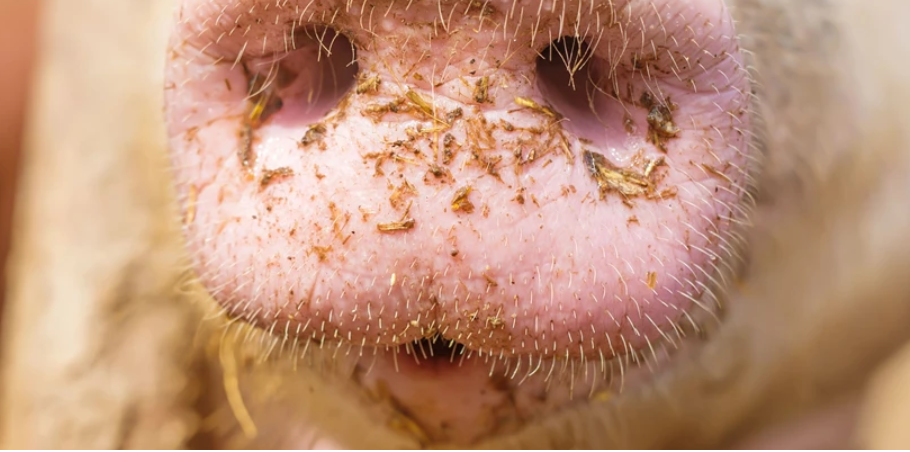The finishers were kept in a pen with 40% slatted floor and 60% solid floor surface. The following behavioral changes were observed:
Wallowing behavior
The first behavioral change of the pigs was that they cooled down by wallowing in manure. The behavior was observed already from 16-17°C.
Changing resting area
At 19°C, the pigs started resting on the slatted floor, as this is cooler than the solid floor surface, and the air velocity around the slats is higher.
Dunging behavior
In steps with more and more pigs resting on the slatted floor, pigs use the solid floor surface for dunging, thus reversing the pen. The behavior started at a house temperature of 20°C.
Increased breathing frequency
The first physical change occurred at a house temperature of 22-23°C; the breathing frequency of the pigs increased.
Reduced feed intake and increased body temperature
When the house temperature rose to 25-26 °C, the pigs' feed intake decreased and their body temperature increased.
*Huynh, T.T.T., A.J.A. Aarnink & M.W.A.Verstegen, 2005. Reaction of Pigs to a Hot Environment. Livestock Environment VII. Proceedings of the Seventh International
Symposium, Beijing, China.
LLC "AgroClimate Ukraine":

2 660 Kyiv, Ukraine;
19, Yevhen Sverstyuk Street, office 914

+38 067 386 26 91, +38 829 52 62, +38 067 537 36 67

volodymyr.brovchenko15@gmail.com





.jpg)